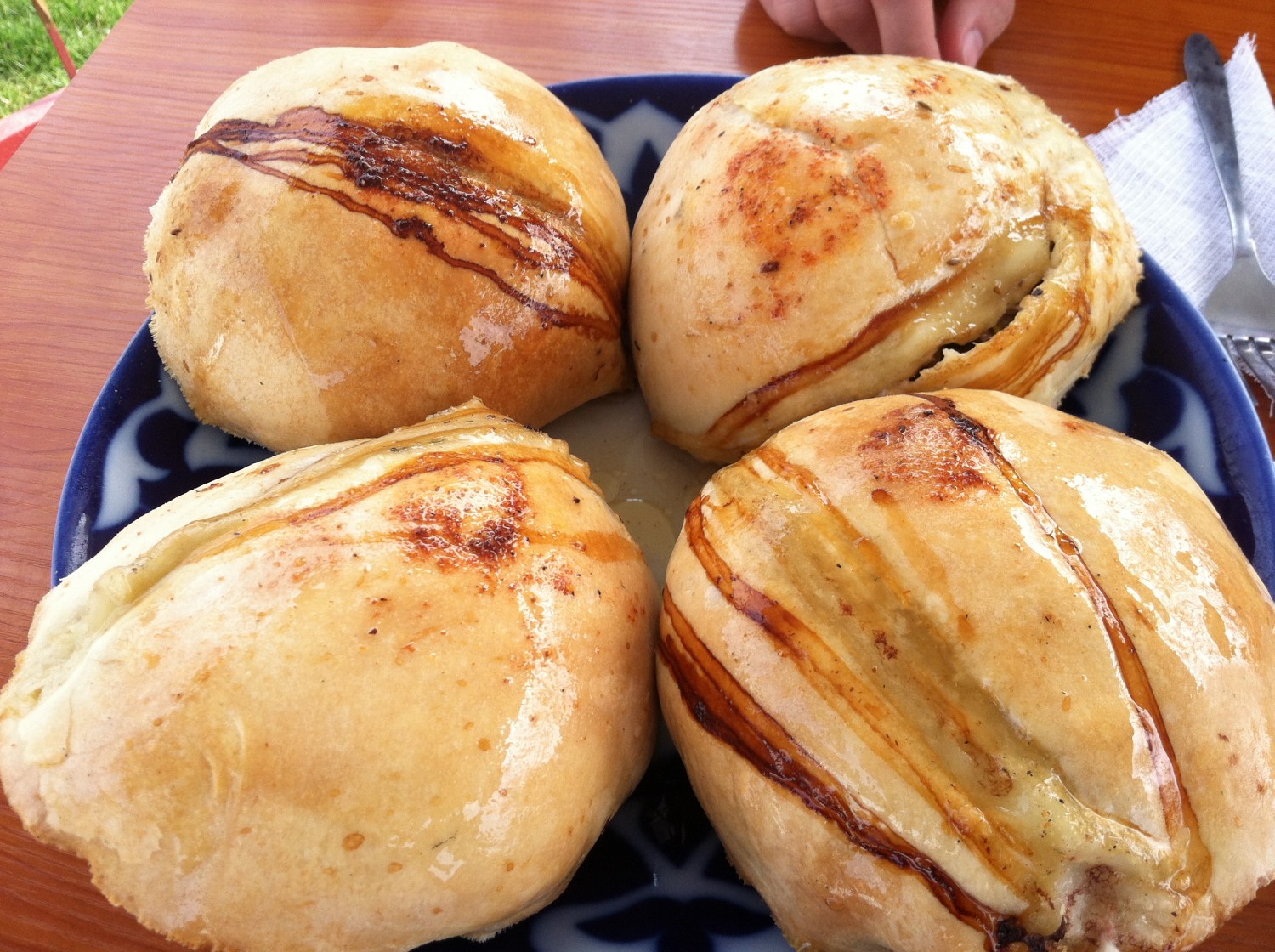The samsa (самса) is a meat- or vegetable-filled savory pastry. They are both flaky (слоеная) and crispy (хрустящая). They are enjoyed across the former USSR, where they are most associated with Central Asian cuisine. The samsa originated in the Middle East and spread across the Silk Road (Шелковый путь), reaching Central Asia, India, and Africa.
Why It’s Called “Samsa”
(Почему они носят такое название?)
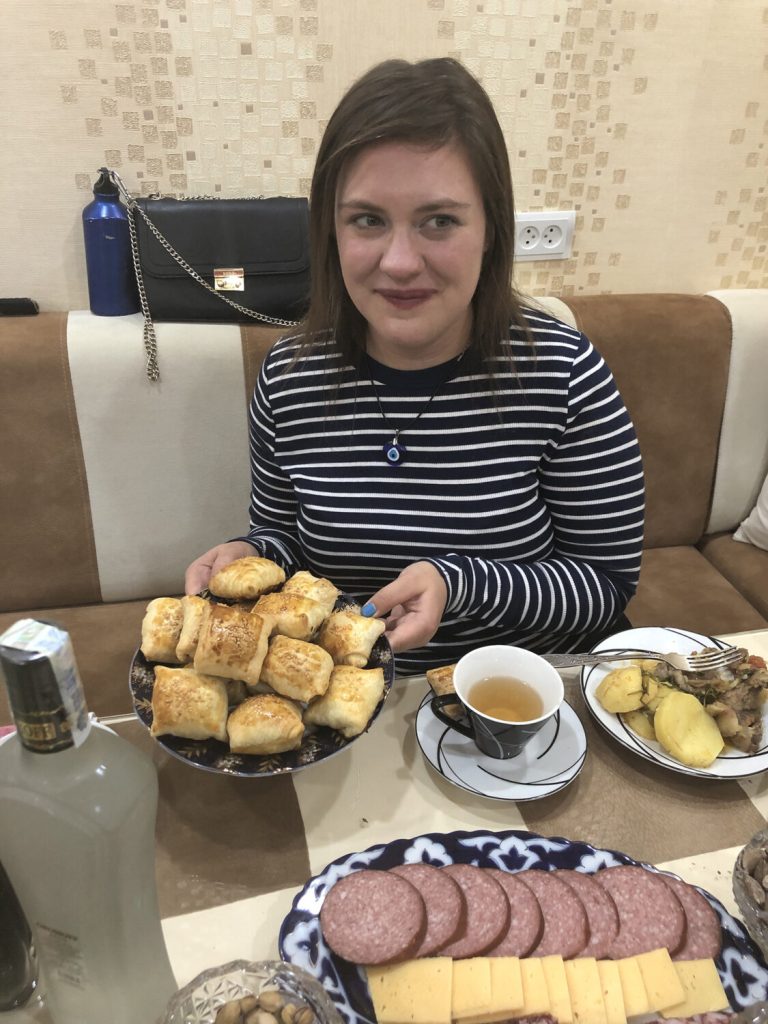
The word “samsa” comes from the Persian word “sanbosag,” which likely meant “lovely triangle.” They were once a delicacy of the courts and originally filled with nuts, spices, fruits, and honey.
The technology, however, was taken by militaries and, later, farmers and herders, filling the flakey crusts with a much simpler filling of ground meat and/or vegetables. It made for a hearty and calorie-intensive meal that could be carried on marches or to fields and pastures. This simple food has a shelf life of nearly a week.
Samsa is popular in Kazakhstan, Kyrgyzstan, and Turkmenistan (where it is known as “самса”), Tajikistan (самбӯса), Uzbekistan (somsa), as well by nationalities in Xinjiang, China. Samosa, a popular Indian dish, came to India when empires from Central Asia invaded India.
In the former USSR, they are most associated with Uzbekistan and Tajikistan, where relatively settled agricultural societies had greater access to ovens in which to bake the pastry.
How Samsa Is Eaten
(Как правильно есть самсу?)
Samsa can be an appetizer, a small lunch, or a snack. Central Asian streets are dotted with samsa stands, offering them as quick and easy street-food. If one eats samsa for lunch, one will often order two, although some stands and restaurants will offer giant versions for those looking to make a meal of them. They go particularly well with tea and will often be available at a traditional tea house (чайхона) as well.
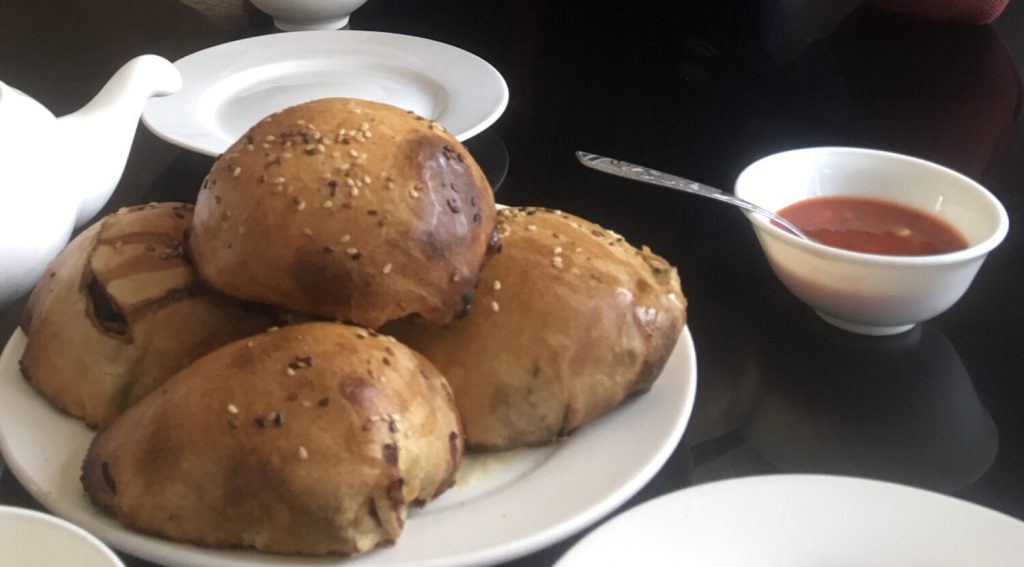
Samsa are often eaten plain, but also sometimes with sauce, particularly in Uzbekistan. This sauce is most often tomato-based and used for dipping.
Samsa are an everyday meal but also staples of holiday and festive tables. Formal Uzbek dinners will often start with a first course (первое блюдо) of meat-filled samsa. The second course (второе блюдо) is often a soup. The third course (третья блюдо) is very often plov (плов).
For much more about how samsa is eaten in traditional chaikhana cafes in Central Asia, see this student observation by SRAS student Eirene Busa.
How to Properly Prepare Samsa
(Как правильно готовить самса?)
The most traditional filling for samsa is mutton (баранина) or beef (говядина). The are traditionally baked in a “тандыр” (tandyr; often written as “tandoor” in English). The tandoor is used across Asia and the Caucasus. They are cylindrical ovens, usually made from clay or sometimes metal. They are usually wood-fired from inside, a feature that adds considerable flavor to the samsa and breads cooked in them.
Samsa are often triangular, but can be nearly any geometric shape: round, triangular, rectangular, or square. Depending on the season and location, samsa can be filled with greens, cheese, mutton, beef, chicken, potatoes, or pumpkin. The nationality of the samsa can also affect its flavor palate. Often, they are made from just ground meat, onion, and salt. Uzbek samsa, however, often use cumin, black pepper, and red pepper in the meat, as well as sesame seeds on the top and a sauce on the side.
Samsa with greens are traditional in some Central Asian cultures for Nowruz celebrations.
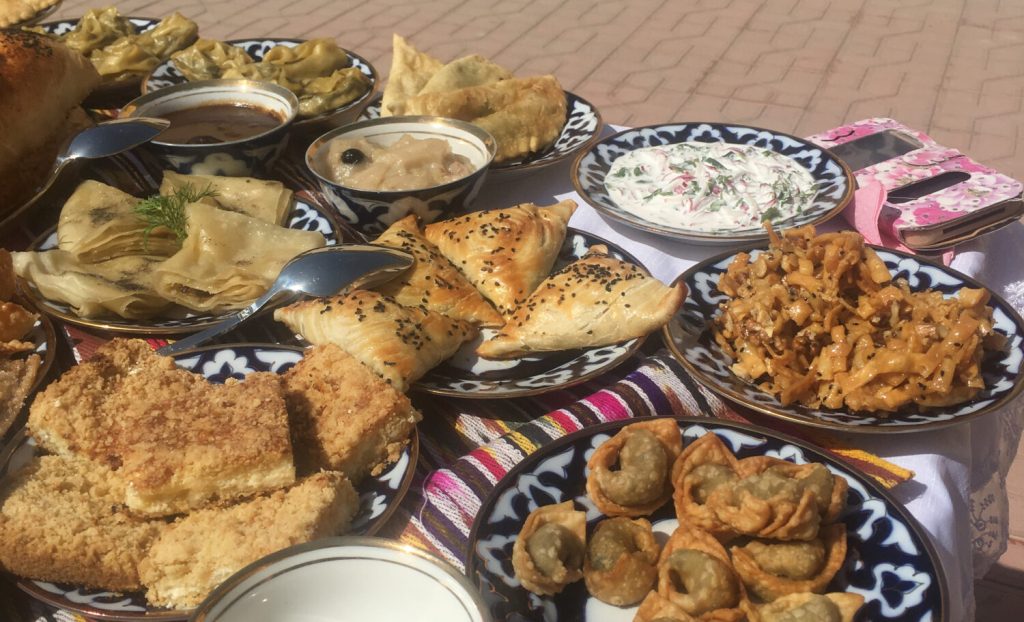
Preparing Samsa
(Давай приготовим!)
This recipe is from a Russian-language cookbook Блюда узбекской кухни, Ш.Г. Салихов., that was written and printed in Uzbekistan in 1987. The English translation is provided by Caroline Murray. This recipe focuses on samsa with mutton or beef. However, feel free to substitute spinach, chicken, potatoes, or pumpkin for the filling.
Сомса «Капак»
Из муки и воды с добавлением соли замешивают крутое тесто и оставляют для расстойки на 30-40 минут. Затем тесто разделывают в жгуты, делят на кусочки, массой 70 г и раскатывают лепешки, на середину которых укладывают фарш массой 90г, края зажимают и придают изделию округло-овальную форму. Для фарша: мясо пропускают через мясорубку, соединяют с рубленым луком репчатым, нарезанный кубиками, жиром-сырцом (необязательный), солью, молотым черным перцем. Полуфабрикат лепят на раскаленные и сбрызнутые соленой водой стенки тандыра, сверху сбрызгивают водой, выпекают в течение 25-30 минут. Если нет тандыра, используйте простую духовку. Разогрейте духовку до 196 градусов С. |
Samsa
Knead a firm dough from flour, water, and salt. Let it rest for 30-40 minutes. Then, cut the dough into 10 equal pieces. Roll the pieces flat. Onto each, place a tenth of your minced meat. Crimp the edges together, giving the dough a rounded oval form. For the meat: run the meat through a grinder and mix with diced, chopped onion, raw fat (optional), salt, and ground black pepper. The uncooked samsa are stuck to the hot tandoor walls and their tops lightly sprayed with salt water. Bake the samsa for 25-30 minutes. If there is no tandoor oven, use a regular oven heated to 385F. |
Our Favorite Samsa Videos
This video walks one through how to make flaky, crispy samsa simply and quickly. The narrator slowly and clearly talks the viewer through the recipe as they bake it. The recipe is in the video description in Russian and English.
This video from the channel Uzbek Woman in the Kitchen (Узбекча на кухне) shows how to create the flakiest samsa. There is no narration in this video. The ingredients and directions are shown on the screen.
This video from the channel Uzbek Woman Cooking (Узбекча готовит) has a different recipe with tomato in the filling and kefir in the dough. These changes will add more flavor to the samsa. This video does not have narration but does have clear graphics explaining the process.
You Might Also Like
For those obsessed with all things pumpkin — pumpkin pie, pumpkin ice-cream, pumpkin-spice lattes — oromo (оромо) is sure to please. Oromo is a rolled, layered, steamed pastry that comes with various fillings (pumpkin being common and our favorite). It evokes everything we love about pumpkin season back home in the States. This main dish […] Central Asia’s rich tradition of carpet weaving reflects the region’s history, culture, and identity. From the ancient nomads of the Pazyryk Valley to the artisans of Kyrgyz yurts and the urban weavers of Samarkand, carpets have long served both practical and symbolic functions. Their materials, techniques, and motifs reflect centuries of interaction between nomadic and […] The Talking Phrasebook Series presents useful phrases and words in side-by-side translation and with audio files specifically geared to help students work on listening skills and pronunciation. Below, you will find several useful phrases and words. To the left is the English and to the above right is an English transliteration of the Kyrgyz translation. […] Kyrgyz cuisine reflects the country’s heritage of pastoral nomadism. Life was spent moving livestock from pasture to pasture and living in collapsible, transportable yurts. The livestock themselves were the primary, sustainable food source. Everything else was either gathered from the land or traded for. The Kyrgyz did not engage in intensive settled agriculture until forced […] There are few essential things to know about Kyrgyzstan. One of these is the country’s folkloric hero, Manas. You’ll find nearly everything in Krygyzstan is named after him: the main airport, national parks, major streets in nearly every city and town, and even karate clubs and movie theaters, not to mention the statues of him […]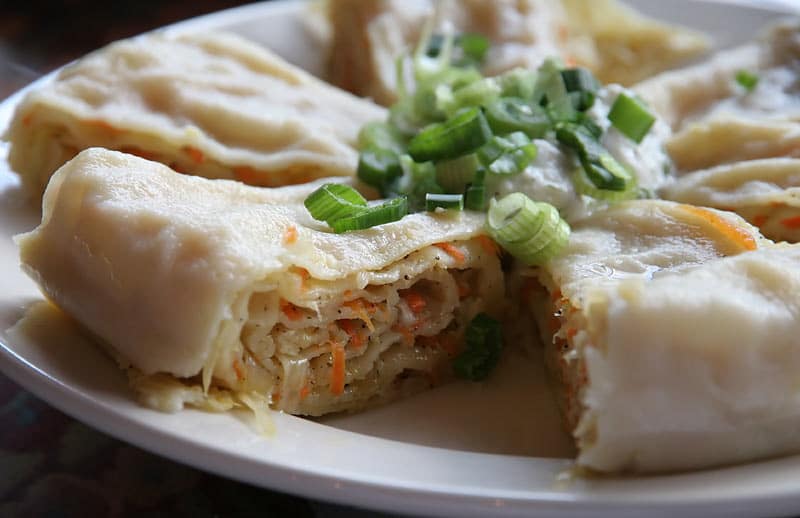
Oromo, Orama, Khanum: A Turkic Pumpkin Delight
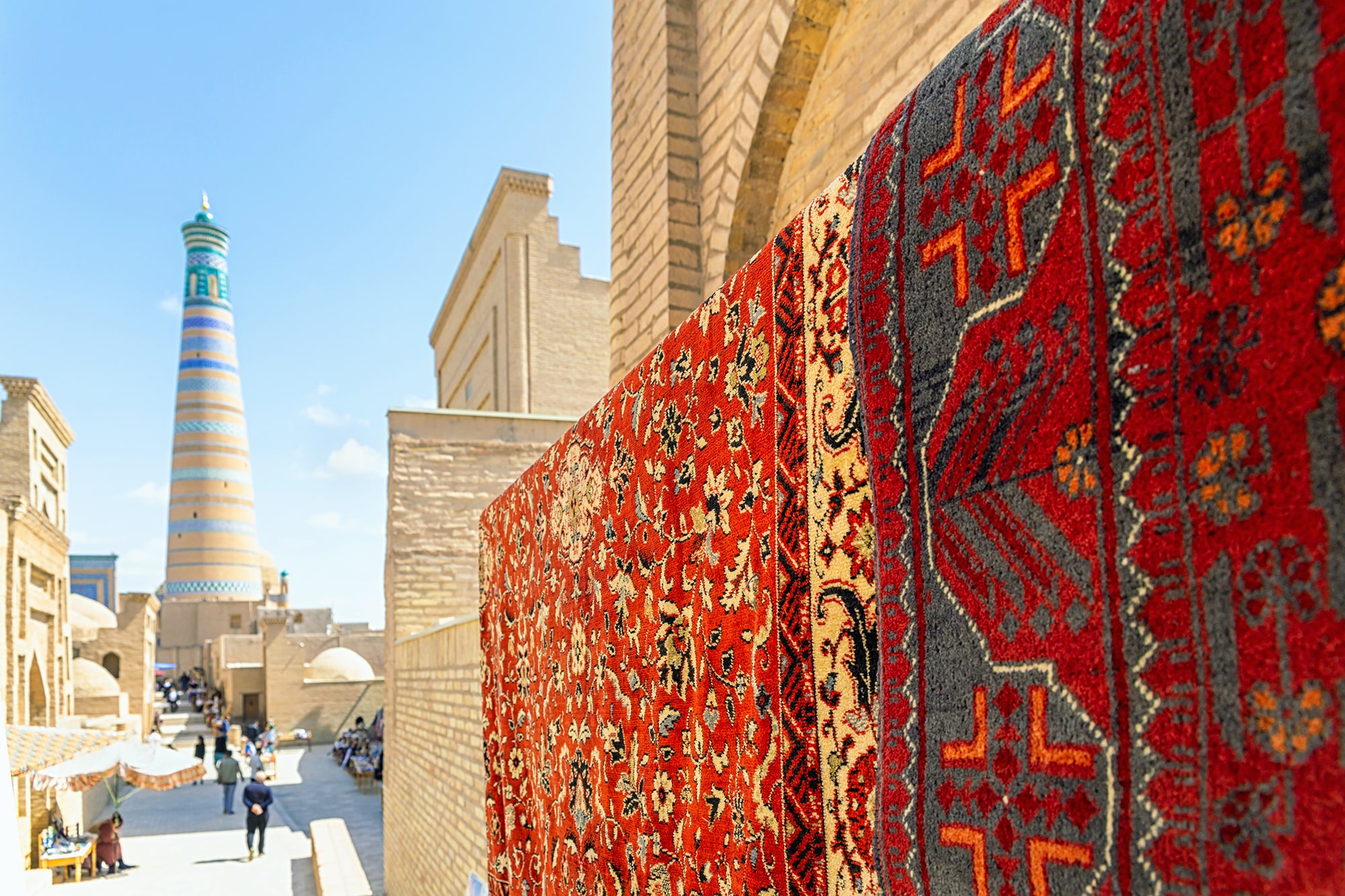
Knots of Culture: Central Asia’s Carpet Weaving Heritage
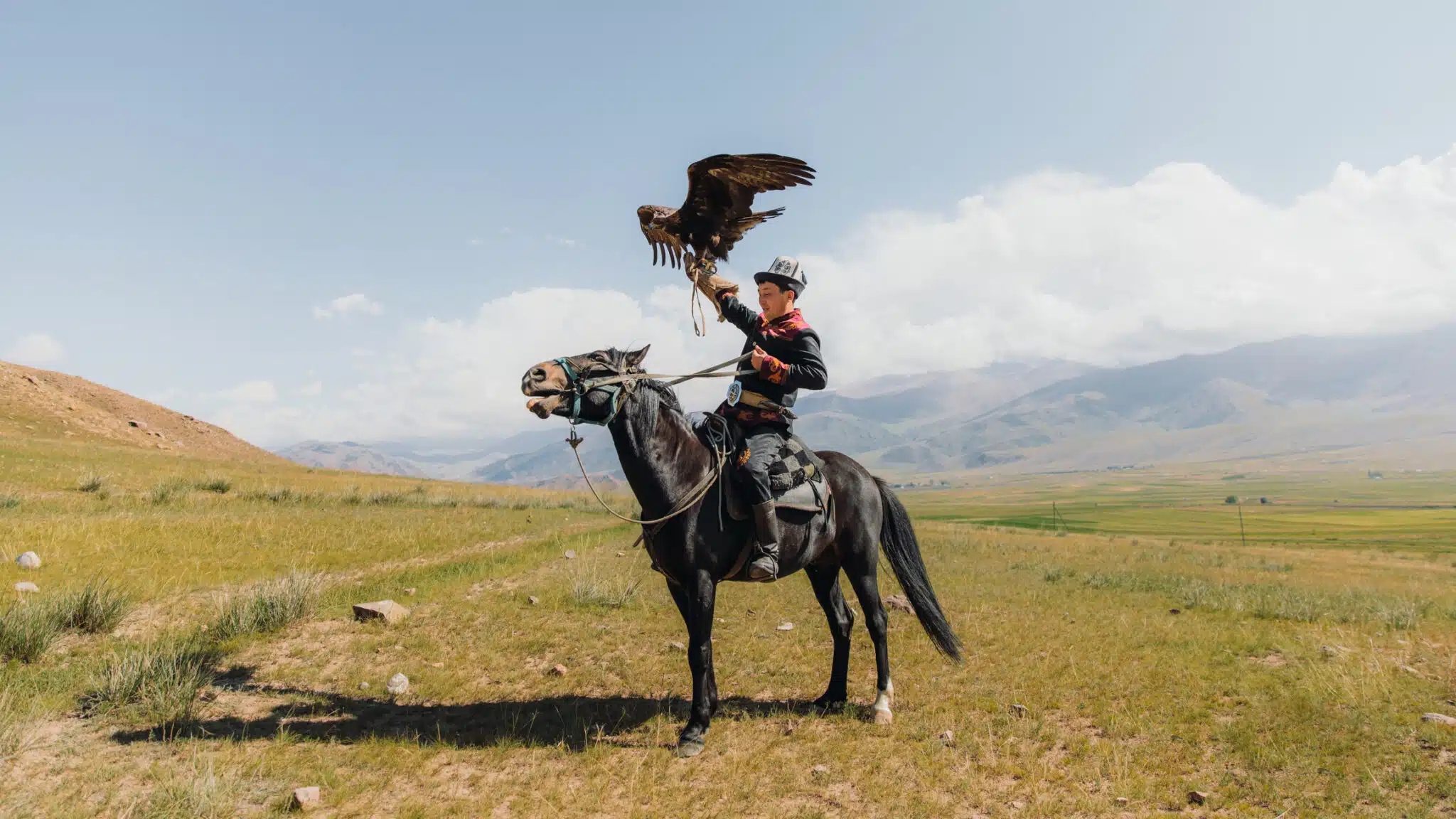
The Talking Kyrgyz Phrasebook
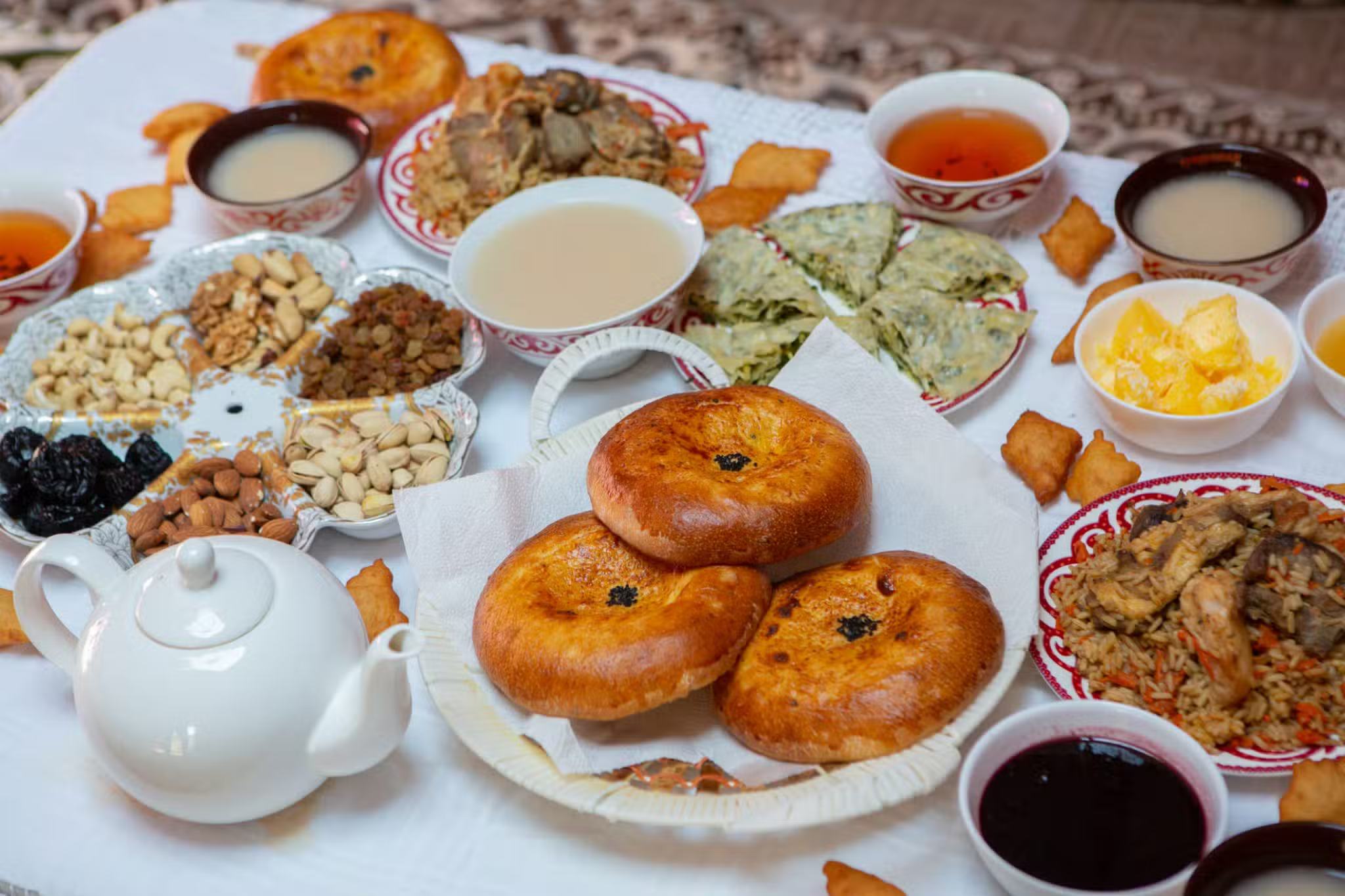
The Kyrgyz Food Dictionary
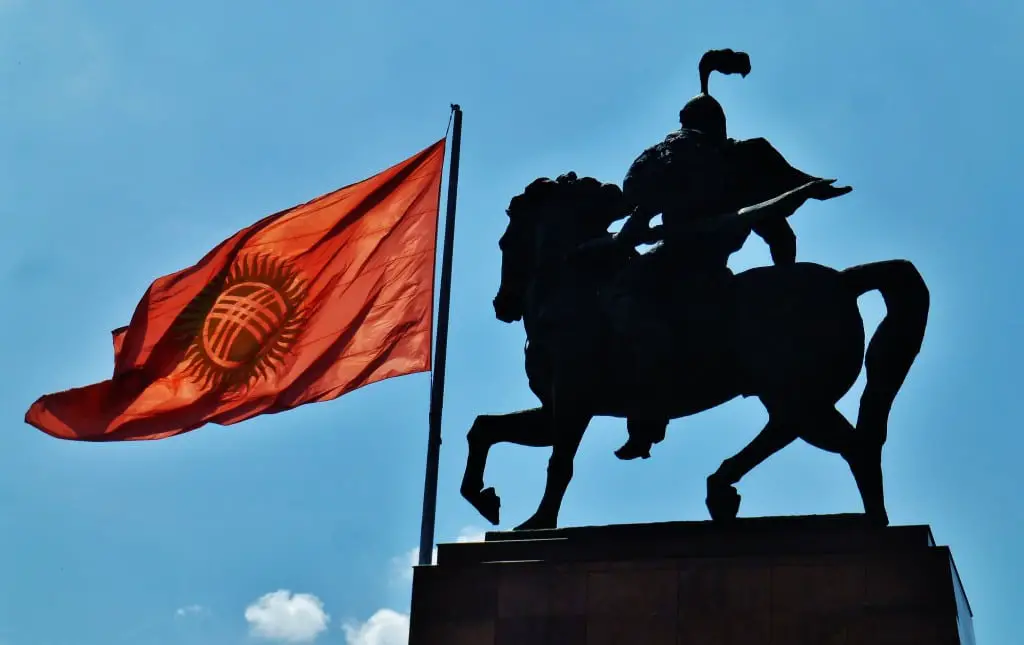
Manas and the Manaschi: Foundations of the Kyrgyz Soul

